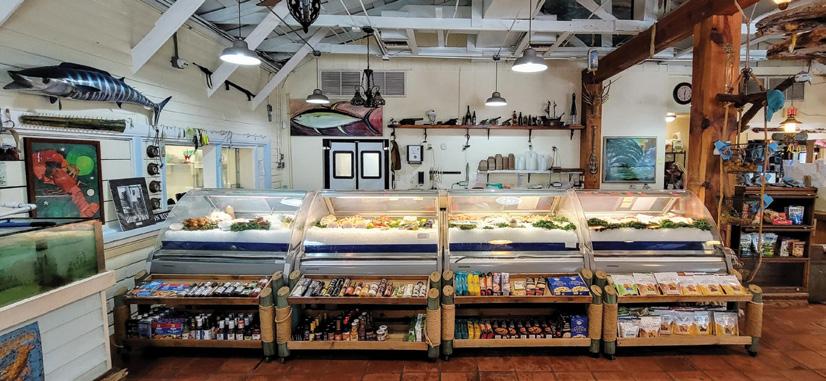
3 minute read
Go Birding
i saW iT! ☑
Florida's Treasure Coast is home to a multitude of bird species and part of the Great Florida Birding and Wildlife Trail. Birding is fun! Use this handy checklist to learn about and keep track of birds that you are certain to see while exploring the area.
Advertisement
Roseate Spoonbill Sometimes mistaken for a flamingo, this ☑ gregarious wading bird is easily recognized for its bright pink plumage and big spoon shaped bill. There is a growing population of these beauties on the Treasure Coast due to rising water levels in the Everglades. Best seen around inland freshwater ☑ wetlands. ☑ ☑
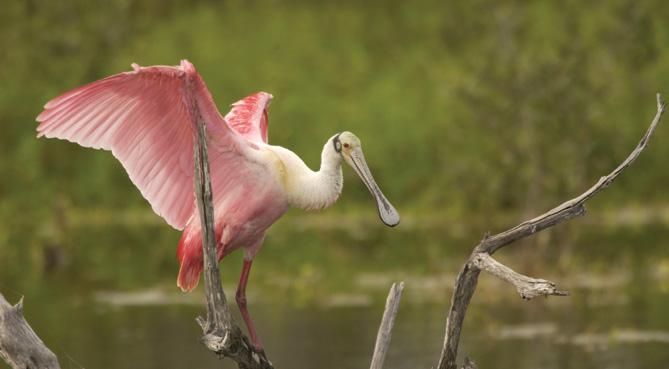
Snail Kite
This medium-sized bird of prey feeds almost exclusively on apple snails and, in the U.S., is found only in Florida. The species is locally endangered due to prolonged drought which affects its primary food source. Lucky observers may get a glimpse at inland marshlands and lakes.
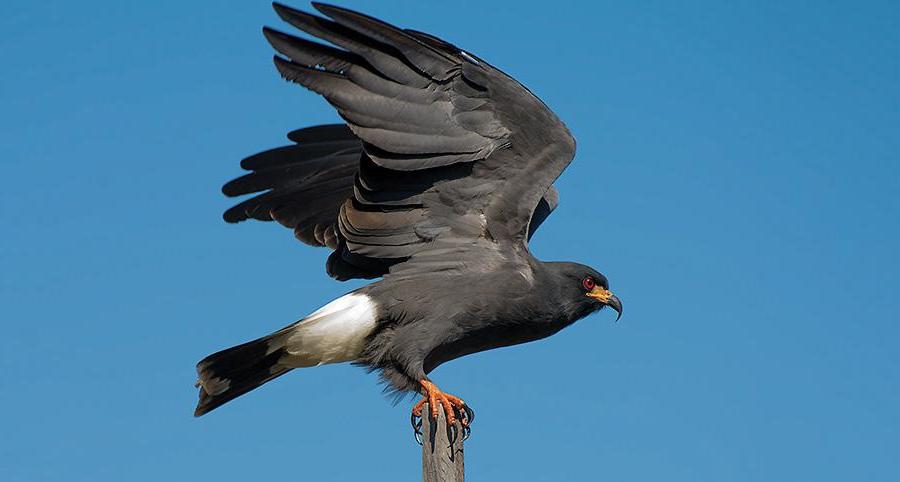
Wood Stork
This hefty wading bird sports a football shaped body, scaly featherless head and long curved bill that are dead giveaways to its Jurassic ancestry. Their plumage is mostly white with black tail and wing feathers. They roost in trees and hang out around brackish wetlands, ponds and lakes.

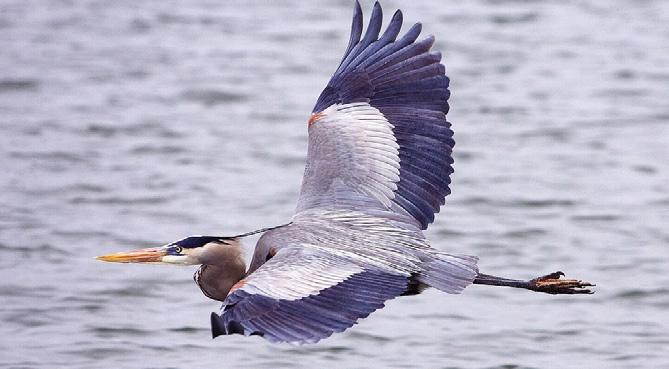
Great Blue Heron
The largest of the North American Herons. At an average of four feet tall with a wingspan of around six feet, they are magnificent to see in flight. Named for their blue-gray plumage they have yellow bills and black head feathers. They adapt to both salt and freshwater environments and are abundant along the Indian River Lagoon.
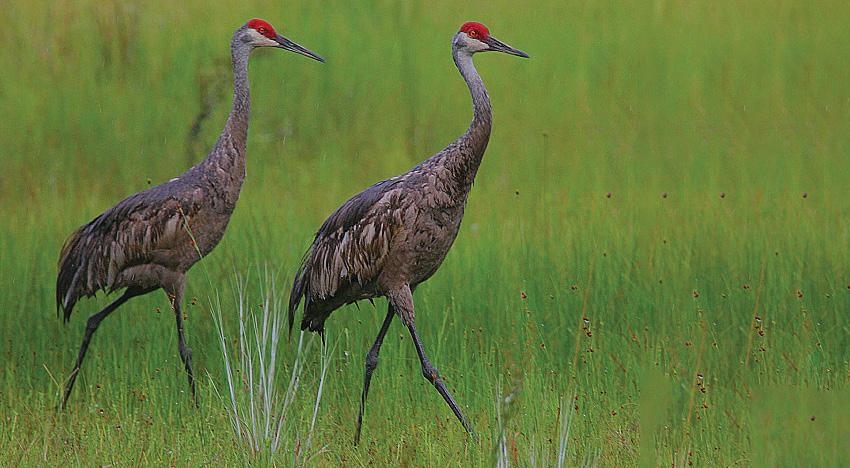

Florida is home to two species of these enormous cranes which stand around four feet tall. The Greater visits from the north in the winter and the Lesser is a year-round resident. Almost always seen in pairs, they are gray in color with dark red crowns. Residents stick mostly around freshwater ponds and lakes.
Osprey
These large raptors can look like juvenile bald eagles with their white bellies and variegated brown underwings. They are actually a hawk found around salt water and feed primarily on fish which can commonly be seen clutched in their talons. Their nests are big stick structures often built on poles, channel markers and dead trees over open water.
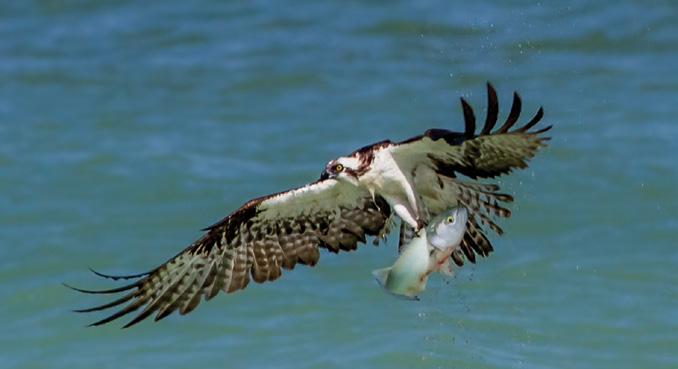
Great Egret
This is the snow-white version of the Great Blue Heron. Other than color they’re nearly identical size and habitat and can observed in many of the same places. Some smaller birds can be mistaken for the Snowy Egret, but their yellow bills and black feet make them identifiable.

White Pelican
These migratory, all white pelicans, are twice the size of their brown cousins and breathtaking to behold. They are often referred to as the “original snowbirds” for their snow-white color and seasonal arrivals and departures. See them in large groups along the lagoon waterfront in Sebastian.
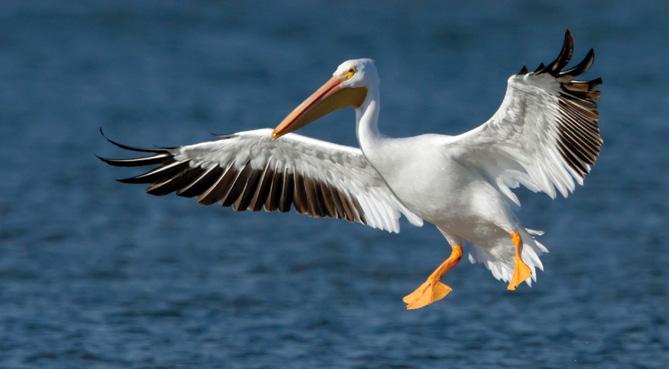
for more informaTion aBoUT Birding and loCal Wildlife We reCommend:
Great Florida Birding and Wildlife Trail: A guide to the network of 510 premier wildlife viewing sites across the state of Florida. www.floridabirdingtrail.com Audubon: Whether you're a beginner looking through your first pair of binoculars or an experienced birder in search of identification tips, it’s all there. www.audubon.org Pelican Island Audubon Society: A local organization providing classes, field trips and educational programs. www.pelicanislandaudubon.org Pelican Island Preservation Society: Another local organization dedicated to the preservation of Pelican Island, the nation’s first National Wildlife Refuge. www.firstrefuge.org



